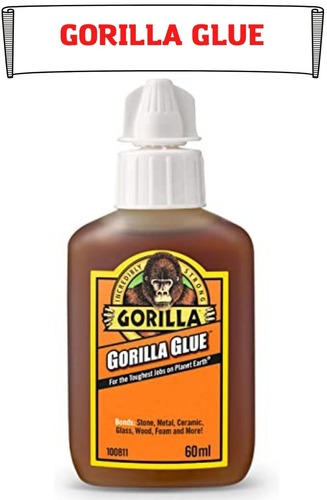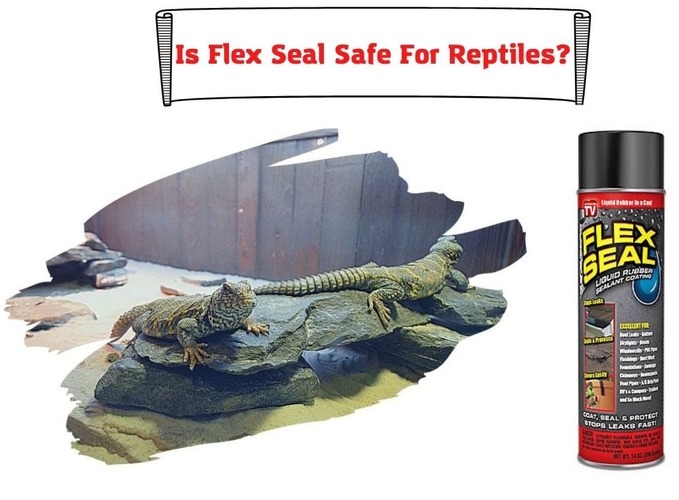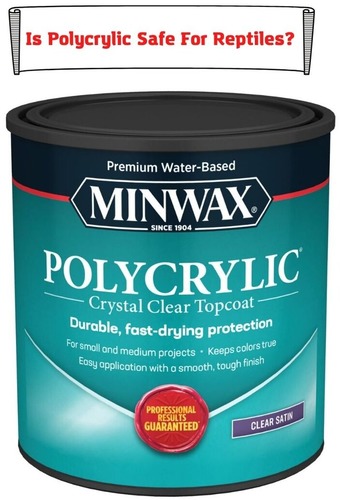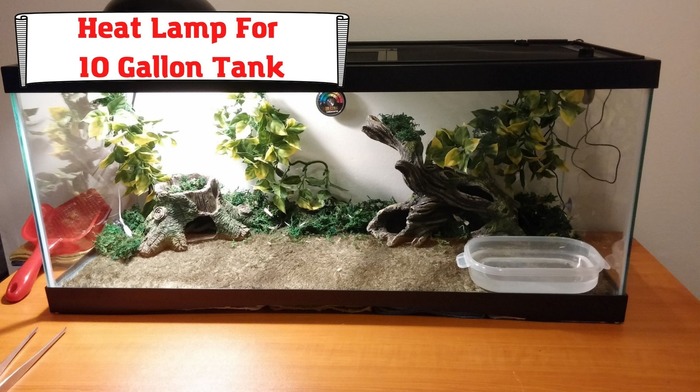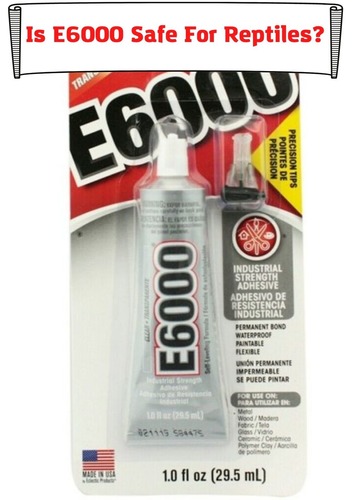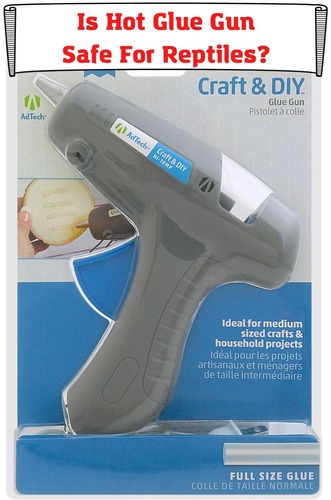
A hot glue gun has some use, whether it is a quick fix in the reptile enclosure or a more difficult project. But is a hot glue gun safe for reptiles?
This post discusses the safety of hot glue guns for reptiles and other safety alternatives.
You will surely avoid putting your reptiles in danger after reading the article. This article discusses hot glue guns, the safety of hot glue guns, and other great alternatives for your reptiles.
HOT GLUE GUNS
The glue gun is essentially gripping equipment in the shape of a gun with a heating chamber through which glue sticks are fed via a trigger. The glue gun heats up very quickly, delivering the molten glue consistently and rapidly via the nozzle. This allows you to achieve precision with its application. Speed is of the essence. If you linger too long, the glue will rapidly chill. In that case, you’ll need to peel the solidified glue off with a chisel. The glue gun is a gripping device.
IS IT SAFE FOR REPTILES?
When used correctly, hot melt glue from glue guns does not pose health risks for your reptiles. They do not release toxic fumes that may cause health issues for your reptiles. There is no proof that hot glue releases toxic fumes if used at the temperature recommended by the manufacturers.
Many hot glue guns have pre-installed thermostatically controlled heaters that maintain a fixed working temperature. This means the possibility of the glue gun overheating and releasing toxic fumes is improbable.
But even if you use the hot glue gun at a temperature beyond the manufacturer’s recommendation, it could release fumes into the air. However, the fumes are usually not toxic. Even in the event of overheating by at least 40°C, the adhesive chemical may break down and cause the release of organic material, which may be toxic. But the level of toxicity is likely to be in such low concentration that it is improbable for it to constitute any health challenge for your reptile. At worst, they could be irritating to your reptiles and you. The toxic fumes would only cause health challenges for your reptiles if they were already dealing with a respiratory challenge. However, it would be best to avoid overheating.
Another safety issue to consider is the risk of electric shock and burns. The hot glue gun is an electric gripping device that depends on an electric power supply to function. If the wires are naked, it may pose a health risk to your reptile. Your reptile could be electrocuted if it stepped on the naked part of the wire while it is plugged in during a project. It would be best to cover the naked part or keep your reptiles safe while working with the hot glue gun. Also, never keep the hot glue gun where reptiles could get entangled in them.
The hot glue gun is about 100° centigrade. This means the glue coming out of it could burn. Hence, it would be best to take out your reptile before working on the enclosure with the hot glue gun.
Once the molten glue cures, whatever toxic fumes are exposed becomes inactive. Your reptiles are completely safe after the hot glue has been left to cure properly.
But another problem arises. Since the hot glue cannot withstand weight nor hold big structures together, your reptiles are at the risk of getting injured if the enclosure falls apart. So, hot glue guns may not be a safe option for your reptiles. The best use of hot glue guns would be to carry out light decorations in the enclosure.
You may also use the hot glue gun as an alternative for tacks to hold a piece of material to the enclosure. But it would not be safe to use the hot glue gun for major construction designs or improvements in the enclosure.
WHAT ARE THE SAFER OPTIONS I HAVE?
Apart from the disadvantage of not having deep fiber penetration like other better alternatives, hot glues are always too hot, and the gun is vulnerable to electric malfunction. It could shock the user and even reptiles in the range of danger.
Below are some great alternatives that are safer and pose no health risks for your reptiles.
GORILLA GLUE
Gorilla Glue is a great and safer alternative to hot glue guns. Although it shares a defect with hot glue: it hardly penetrates fiber deep as it is not great at filling spaces; it is stronger than hot glue. Gorilla Glue can withstand big structures and weights.
Also, unlike hot glue, Gorilla Glue is impressively water-resistant. It can tolerate different temperatures and is stainable.
Gorilla Glue is not harmful to reptiles if used properly. But if you disregard the safety precautions, you may end up complicating the health of your reptiles. If inhaled, exposed to the eyes, skin, or ingested, Gorilla Glue would cause serious harm to your reptiles. It could cause respiratory problems for your reptiles. It can also irritate the eyes and skin.
Hence, keeping your reptiles away from the workspace would be safer. It would also be advisable to work in an adequately ventilated area. It would also be best to keep the glue away after use to prevent gastrointestinal complications from accidental ingestion by your reptile.
Hot glue guns pose more risk than Gorilla Glue. Your reptile risks the potential for a fire accident or an electric shock. Other hazards include getting entangled in the wires and suffocating.
Also, hot glue is only good for temporary use. It is not moisture resistant and will not hold long in a damp environment. And it does not have an impressive weight-holding capacity.
But the Gorilla Glue poses no health risk to your reptiles if you observe all the safety precautions. Do not work in a closed area. After application, allow the enclosure to cure properly for the recommended period, and your reptiles can enjoy the enclosure for as long as possible.
TWO-PART EPOXY GLUE
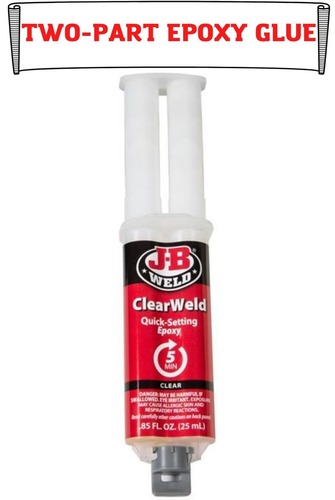
The Two-Part Epoxy Glue package usually contains resin and a hardener. This duo is prepared and applied to form an impressive alternative to hot glue guns. It is resistant to temperature and moisture. Unlike Gorilla Glue and hot glue, the Two-Part Epoxy Glue is a great choice for filling gaps. This glue offers the most impressive gap-filling properties than any other adhesive.
The Two-Part Epoxy glue is non-toxic and absolutely safe for your reptiles as long as you let it cure fully. Again, unlike the hot glue guns, this glue does not pose the risk of electric shocks, choking, and other health hazards of entanglement with the wire or the risk of burning.
SILICONE
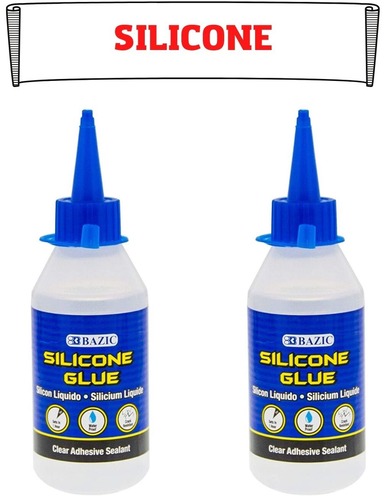
A few brands of silicone are great alternatives to hot glue guns. They can withstand various temperatures, have impressive sealing properties that meet the needs of your reptile enclosure, and, more importantly, they are safe for your reptiles when you apply them safely. These brands include Aqueon Silicone Sealant, DAP Adhesive Silicone Sealant, Marineland Aquarium Sealant, Loctite Clear Silicone Waterproof Sealant, etc.
These brands are 100% silicone. This is important because it means they have impressive bonding abilities such that the enclosure parts won’t fall apart to injure your reptile. Also, they are completely safe for your reptiles as long as you allow them to cure fully. If you do not allow them to cure fully before putting your reptiles in the enclosure, you would deliberately expose them to health risks.
This alternative beats the hot glue guns in many respects. Again, the risk of electric shocks and fire accidents for your reptiles is avoided. Also, hot glue guns are for temporary use. They cannot hold much weight. This means that your reptiles could be at the risk of injury if pointed parts of the enclosure get to them if the enclosure falls apart. This problem cannot be encountered with these silicone brands.
Conclusion
While hot glue guns may be convenient and readily available to use, the safety of hot glue guns for your reptiles is in question. Some other alternatives are safer for your reptiles. They are also stronger for the weight and structural design of the reptile enclosure.
Nevertheless, hot glue guns have particular uses. They can be used for light decoration designs in the enclosure. This article has helped you make a sound choice on what to use for the specific needs of each project.
- Dubia Roach Egg Sack: How To Understand if It’s Healthy? - January 2, 2023
- How To Feed African Dwarf Frog While on Vacation? - December 26, 2022
- Baytril for Bearded Dragon: Here’s What You Should Know - December 19, 2022
